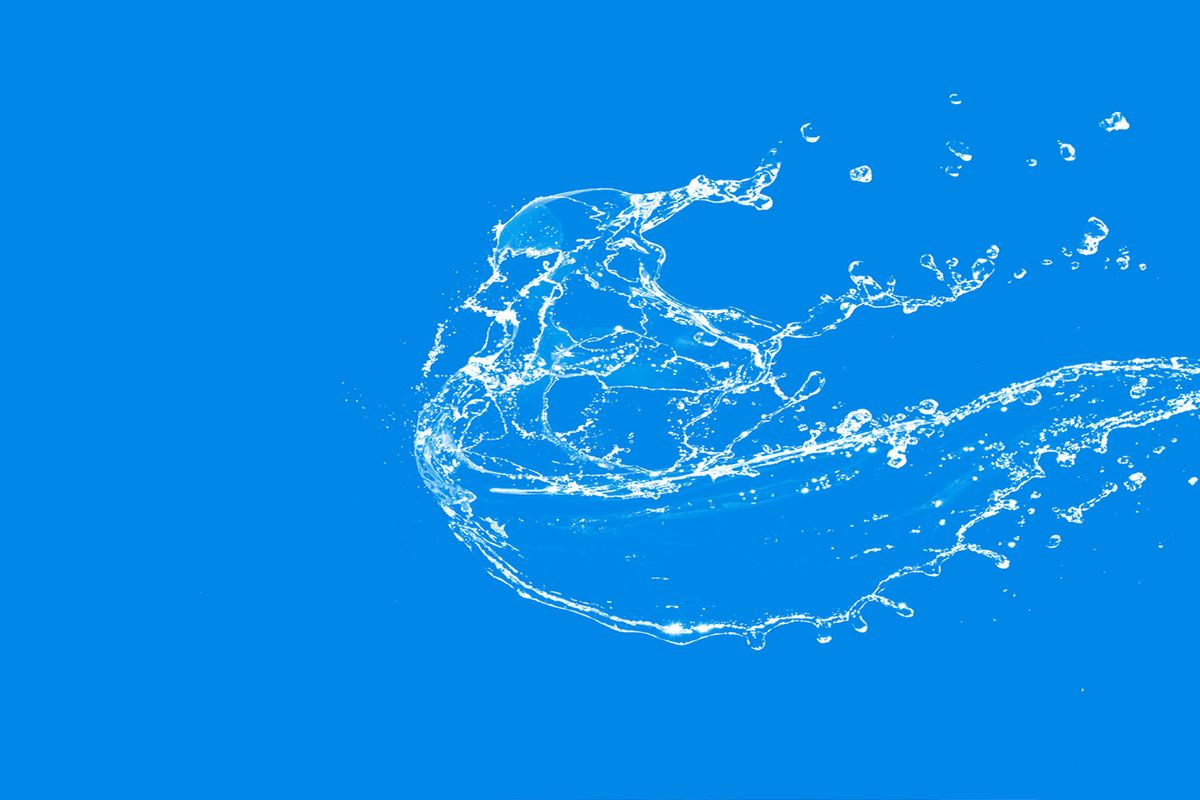Japanese researchers writing in the International Journal of Urology have made strides in helping settle a long-standing sexological debate: The clear fluid that some people with vaginas have been known to squirt during sexual stimulation is, for the most part, just pee.
This is slightly different than female ejaculation, which some experts have defined as a thick, milky fluid secreted by the female prostate (also known as Skene's glands), though female ejaculate is a term often used interchangeably for squirting.
To make matters more confusing, for centuries scientists and anyone willing to take a peek down there weren't 100 percent sure where this fluid was truly coming from. Many people assumed the bladder, but in some experiments capturing and analyzing the liquid (in the name of science, naturally), researchers found prostate specific antigen (PSA), which is only produced by the female prostate. These two glands sit on either side of the urethra, so it makes a little sense why this has been hard to suss out.
However, people have known about squirting since long before Jesus was born. The Greek philosopher Pythagoras and Hippocrates, the "father of medicine," both inaccurately described female discharges as "semen."
"The emission of fluid during orgasm in women was described for the first time to the best of our knowledge in the 4th century," researchers wrote in a 2010 paper titled "The History of Female Ejaculation." "The classical Taoist text, 'Secret Instructions Concerning the Jade Chamber,' provides information concerning the selection of romantic and sexual partners as well as the sexual act itself."
Squirting eventually became known to Western scientists as well. William Smellie was an 18th Century English obstetrician — who may also have been a murderer, but was known as the "father of British midwifery." Smellie once wrote of "a fluid ejected from the prostate or analogous glands" in women.
But we're still learning about this phenomenon, as five researchers from Okayama, Japan recently reported in a paper titled "Enhanced visualization of female squirting." The paper was novel in its methods for identifying the origin of the mystery fluid.
"Little is known about the composition of this fluid and the mechanism by which the fluid is discharged," the researchers write, with the detached air of a mechanic's car repair manual. The study also contains gems like "it is difficult to collect squirted fluid because the direction of squirting is variable." This was clearly a messy experiment.
The trials began in a very unsexy manner by first inserting a catheter into the participants' urethras to drain their bladders. Then, saline and indigo carmine (blue food coloring) was flushed back up into the bladder. The dye would become crucial later in the experiment.
Most of the samples also contained prostate-specific antigen, which does not originate in the bladder. That suggests that squirting is not entirely comprised of urine.
Five women participated, with two each in their 30s and 40s, and one in their 50s. Three were able to use their hands alone to squirt, while the other two required penetrative sexual stimulation, in this case from two male partners, to squirt. While their partners were happy to help, researchers tried to make sure the male partners didn't ejaculate, which would make it less likely they contaminated the result.
In any case, each participant was able to squirt, and in every instance blue dye went everywhere — suggesting the bladder was the origin of much of the secretions. As much of the secretions as possible were collected in sterile cups.
"The discharged fluid was blue in all cases, confirming the bladder as the source," the researchers concluded. The use of dye helped confirm what other scientists have observed using pelvic ultrasound scans: "squirting is essentially the involuntary emission of urine during sexual activity."
However, there's a catch: most of the samples also contained prostate-specific antigen, which does not originate in the bladder. That suggests that squirting is not entirely comprised of urine; moreover, the presence of PSA in the mix makes squirting different from either urinating or female ejaculation.
If you're truly curious how this experiment was conducted, there is a short video (warning: the video is graphic, even though the presentation is quite detached and clinical) of the sex acts with blue dying gushing everywhere, scored with music to accompany.
The authors emphasized that the subjects were not sex workers (as this may have somehow skewed results) and did not have coital urinary incontinence, in which some women will pee during sex. Coital urinary incontinence is a separate, distinct phenomenon which does not occur during orgasm. In contrast to squirting, generally those who have coital incontinence don't describe it as an enjoyable experience. To recap: female ejaculation, squirting, urinating and coital urinary incontinence are all separate acts. We haven't even mentioned the Bartholin's gland, which secretes mucus for lubricating the vagina.
The authors said it was difficult to find subjects for this study. Studies suggest that percentage of women with the ability to squirt ranges from 10 to 54 percent. Such a range may indicate there's a lot about female sexual pleasure that science does not yet know.
Males can apparently squirt, too. A 2018 case study of a 25-year-old man, also published in the International Journal of Urology, described a man who ejaculated, then 20 seconds later "squirted" for about a minute. This fluid was analyzed and also confirmed to be mostly urine. The description of the experiment sounds notably uncomfortable, as it involved an ultrasound probe inserted into the man's rectum used to measure contractions in the bladder.
The female reproductive system may have just gotten a little less mysterious, but there's a good reason why scientists don't fully understand this anatomy: Medical sexism. It's as prominent today as it was in the 17th and 19th centuries when men like Alexander Skene and Caspar Bartholin the Younger were going around naming parts of female anatomy after themselves.



Shares